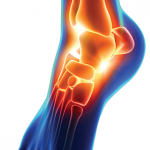 ACR CONVERGENCE 2021—Patients with inflammatory arthritis affecting the foot and ankle will likely need surgical treatment by an orthopedic foot and ankle surgeon, but in the era of biologics, surgical intervention may not be needed as often as it once was.
ACR CONVERGENCE 2021—Patients with inflammatory arthritis affecting the foot and ankle will likely need surgical treatment by an orthopedic foot and ankle surgeon, but in the era of biologics, surgical intervention may not be needed as often as it once was.
“The good news for patients with rheumatoid arthritis is that there has been a decline in the need for intermediate surgery, including foot surgery,” said Kathryn Williams, MD, an orthopedic surgeon specializing in foot and ankle surgery at the University of Wisconsin School of Medicine. The decline, she said, coincides with the introduction of biologic agents in 2002.
Despite this decline, she emphasized that surgery remains key to alleviating pain from arthritis-associated foot and ankle symptoms.
In a session titled What Orthopedists Want Rheumatologists to Know: Surgical TX for Foot & Ankle Arthritis, Dr. Williams described the types of surgeries routinely used to alleviate pain symptoms due to inflammatory arthritis affecting the foot and ankle joints by using case studies to highlight the different surgical options based on the joint involved—ankle, hindfoot or forefoot.
She opened her presentation by underscoring that nearly 90% of people with rheumatoid arthritis will have foot and ankle symptoms, with most presenting to her clinic with pain that is typically more symptomatic in the forefoot and ankle, and fewer symptoms in the hindfoot or midfoot. Rarer, around 20%, are patients who present to her clinic with initial symptoms of rheumatoid arthritis, whom she refers to a rheumatologist.
Ankle Surgical Options
For patients with rheumatoid arthritis primarily affecting the ankle, both arthrodesis (fusion) or total ankle replacement are viable options. Dr. Williams said fusion provides good pain relief and that about 50% of her patients opt for arthrodesis.
In discussing the role of total ankle replacement, Dr. Williams cited recent data supporting its use for patients with rheumatoid arthritis despite concerns that these patients may be at higher risk for postoperative complications because of their disease and treatments for it. Data from the National Inpatient Sample database show that total ankle replacement was associated with a decreased risk of myocardial infarction, pulmonary embolism, surgical site infection and urinary tract infection in patients with rheumatoid arthritis, but a higher rate of pneumonia.1 Given this evidence and the benefits of total ankle replacement to allow for a more natural gait pattern than fusion, she said that total ankle replacement is a viable option. However, patients need to understand that this surgery carries a higher re-operation rate than fusion.
She emphasized that both total ankle replacement and arthrodesis are good options, and she counsels her patients about the pros and cons of each.
Hind- & Forefoot
Regarding the hindfoot, Dr. Williams said that arthrodesis is the mainstay of treatment to correct a valgus deformity or involvement of the talonavicular, subtalar and calcaneocuboid joints. To determine the area most affected, she often uses computed tomography- or fluoroscopic-guided anesthetic injections.
During the question-and-answer section, she underscored the importance of using image-guided injections to determine the most painful joints to address surgically because it is not reasonable to fuse every joint in the foot. She also emphasized the need to counsel patients that they will not have complete pain relief after the fusion, but that they can expect the level of pain relief to be similar to what they feel an hour after receiving the anesthetic-guided injection.
To treat the forefoot, Dr. Williams said surgical approaches are changing, particularly for the hallux metatarsophalangeal (MTP) joint. Although arthrodesis remains the standard for the halux MTP joint, she said that joint preservation for the lesser halux MTP joint is becoming a bit more accepted.
Mary Beth Nierengarten is a freelance medical journalist based in Minneapolis.
Reference
- Anastasio AT, Patel PS, Farley KX, et al. Total ankle arthroplasty and ankle arthrodesis in rheumatic disease patients: An analysis of outcomes and complications using the National Inpatient Sample (NIS) Database. Foot Ankle Surg. 2021 Apr;27(3):321–325.


